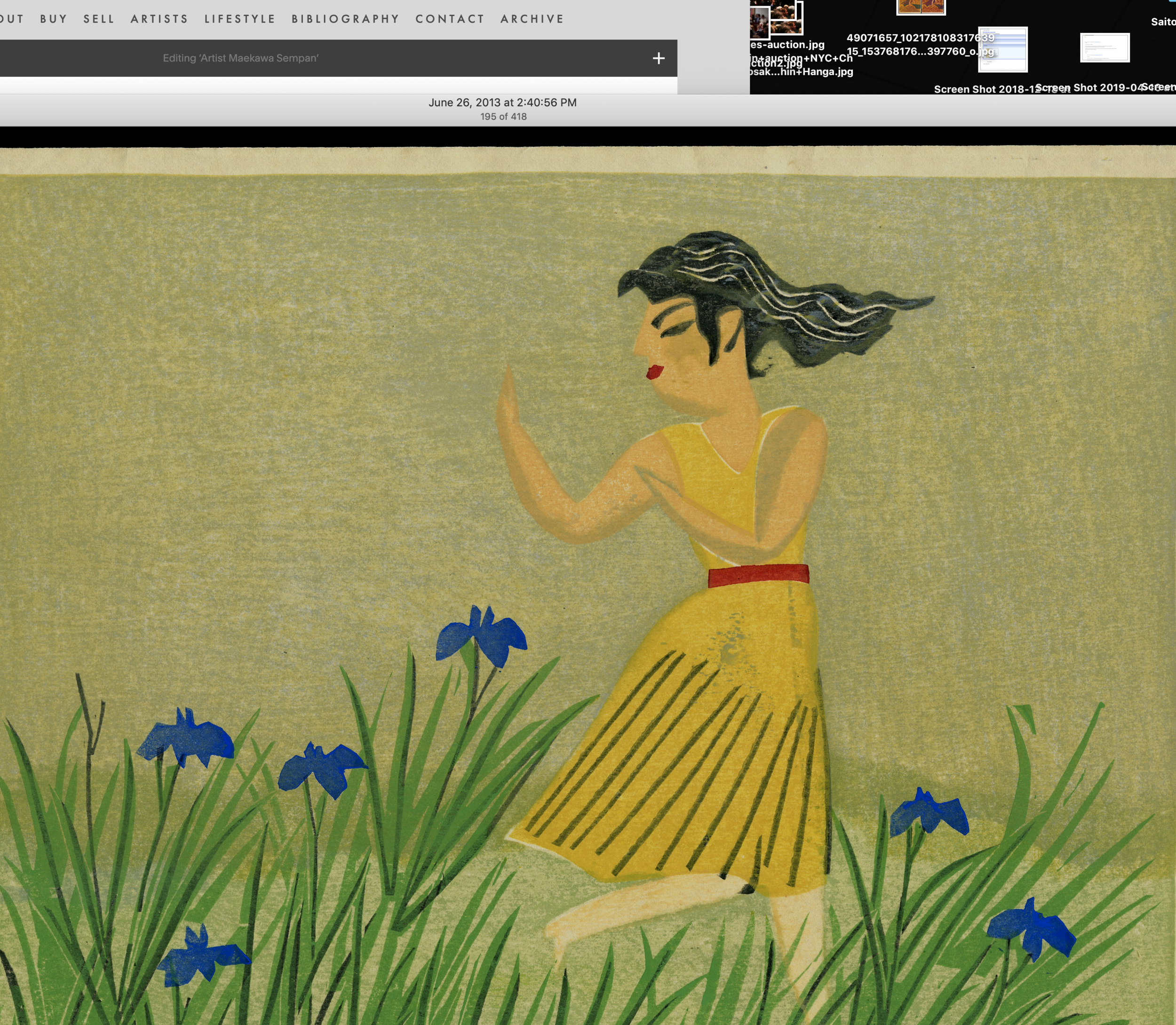SENPAN
COLLECTING JAPANESE PRINTS FEATURED UKIYO-E ARTISTMaekawa Senpan
1888 - 1960
Ishida Shigezaburo, better known as Maekawa Senpan, was a graphic illustrator and sosaku hanga artist born in Kyoto in 1888. After deciding to become a professional artist, Maekawa attended the Kansai Bijutsuin from 1905 to 1911 before moving to Tokyo at the age of twenty-four. The following year, he became a graphic illustrator for the popular cartoon Tokyo Puck. During this period, Maekawa also became inspired to take up mokuhanga by the artist Minami Kunzo.
Entirely self-taught, he used the time-consuming process of trial and error to develop his own style and technique, a process that took nearly a decade to perfect. Maekawa first exhibited at the sosaku hanga Kyokai exhibition in 1919 and later became an active member of Nihon Hanga Kyokai from 1931 to 1960. Following his initial debut with the organization, Maekawa continued to make a living as a cartoonist, peregrinating throughout the countryside sketching local people and customs. His affectionate disposition towards everyday townsfolk can be seen in a variety of prints, including Karuizawa, the five-volume series Hot Spring Notes (1944–1959), and Leisure Time Leisure Books (1945–1960). Throughout the early Showa period, Maekawa went on to establish himself as the creator of Hasty Bear, a comic-strip series featured in the Sunday edition of the Yomiuri Shinbun newspaper. Although he spent the duration of his early career as an illustrator, Maekawa continued to produce between three and four prints annually for exhibition. In 1927, he submitted a print to a government show and was shocked when it sold. From that point forward, Maekawa exhibited intermittently at Teiten (1927, 1928, 1931) as well as Shun'yokai (1929, 1931, 1935) and Shin Bunten (1937, 1938, 1942, 1944). Midway through his career, he shifted emphasis and began devoting greater efforts to printmaking and print organizations. Maekawa became a founding member, regular exhibitor, and stalwart support of Nihon Hanga Kyokai from 1931 over the next three decades; in addition, he served as a member of the Gendai Manga Kyokai, and frequently contributed to Han Geijutsu, Chokokuto, Kasuri, Bakuchiku, Dessan, Shiro to Kuro, HANGA, Kaze, and Jissen Hanga.
After the war, Maekawa greatly benefited from newfound American enthusiasm for the creative print movement and, by 1953, was able to devote himself entirely to his art. He won major prizes at the International Sao Paulo Biennale in 1953 and the Tokyo Biennale in 1957. He achieved further international recognition through his feature in Oliver Statler's book, Modern Japanese Prints: An Art Reborn (1956) and Michener's portfolio The Modern Japanese Print: An Appreciation. Due to controversy over his membership in multiple hanga organizations, Maekawa became a member of Nippankai and withdrew from Nihon Hanga Kyokai shortly before his death in 1960.



